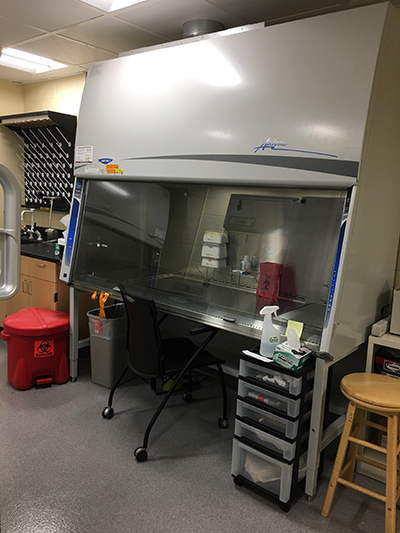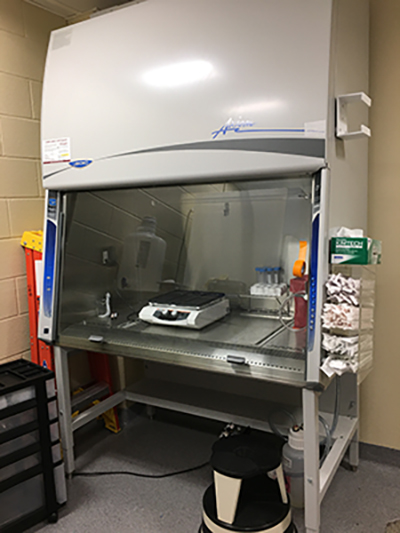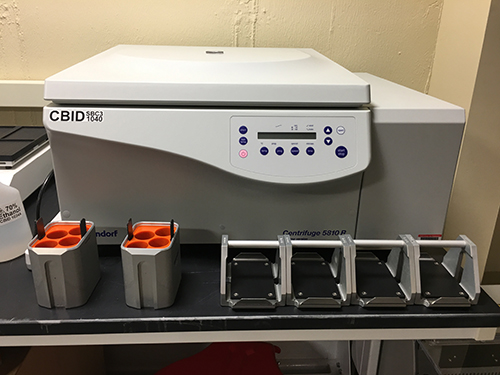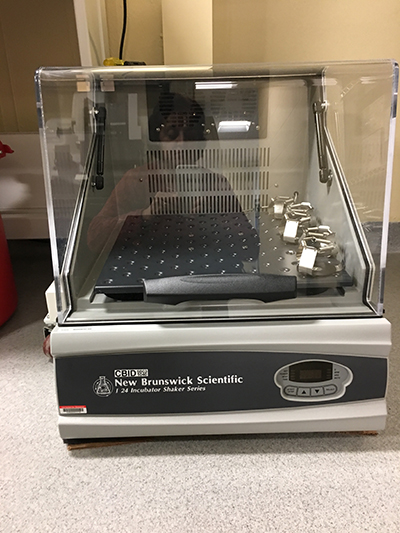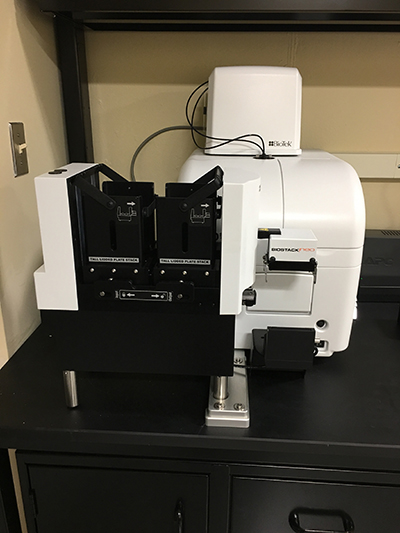Instrumentation
In addition to a dedicated autoclave that is readily available for contained biohazard waste processing, the laboratory is equipped with freezers (-20C and -80C), a refrigerator, multi-modal BioTek Synergy Neo 2 plate reader, incubator shaker, cell growth incubator, centrifuges, bulk washers and dispensers, biosafety cabinets, Monlith X (NanoTemper) and a MicroCal PEAQ-ITC.
Key Instruments
Autoclave (10sq ft ) for contained biohazard waste processing.
From Left to right: a -80 freezer, a -20C freezer, and a second -20C freezer

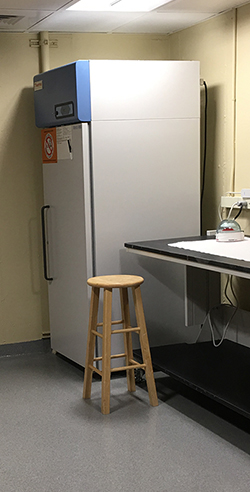
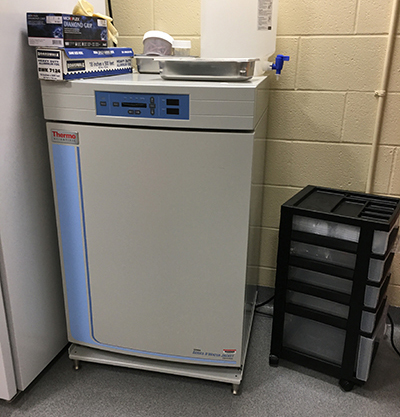
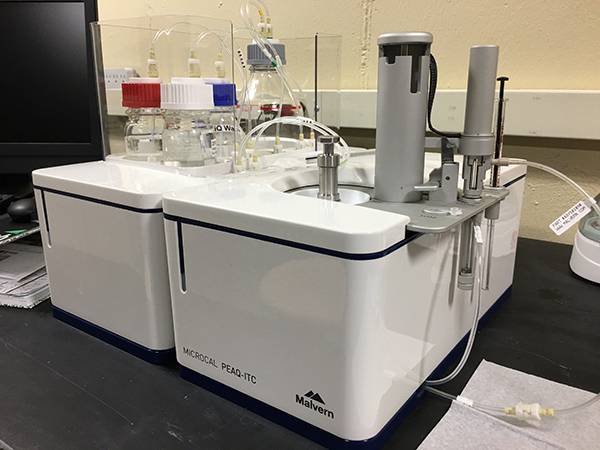
The MicroCal PEAQ-ITC is a highly sensitive, low volume isothermal titration calorimeter.
Applications
- Characterize interactions between proteins, nucleic acids, lipids, drugs and inhibitors.
- Stoichiometry & thermodynamic parameters.
- Correlate binding and activity.
- Structure-activity relationships.
- Hit validation, lead optimization, mechanism of action
Sample guidelines
- Both the cell and syringe samples should be in identical buffers.
- Required volumes per measurement: 280ul of sample for the cell and 80ul of sample for the syringe.
Suggested concentrations
In the cell - at least 10x -20X the expected Kd, 350 ul per run, 280 ul will be injected.
In the syringe (ligand) - 10x above cell sample concentration, 80 ul/run
For example, for a 1 uM Kd a good titration will be - 20uM cell sample (350ul) and 200uM ligand (80 ul), any other higher concentrations with ratio 1:10 will work too.
All users will bring ultrapure methanol (~80 ml/all day run) and Pipet/tips/tubes for 80 ul ligand dispensing. HTS staff will train students/postdocs on ITC usage and enable access to the lab for the duration of the experiment. The users will sign into the log book and will also follow/log rinse and clean protocols during the experiment and at the end of the day. All issues encountered during the ITC runs will be entered into the log book.
The Blue®Washer uses contact-free centrifugation technology to remove liquids from 96, 384 and 1536 microwell plates without disposable tips. This environmentally friendly technology allows you to handle cellular, bead based, genomic, and ELISA assays contamination free with no residual volume, eliminating background and variability in assay data.
Monolith uses Spectral Shift and MicroScale Thermophoresis (MST) for measuring biomolecular interactions in 384 well plate format. MST measures the strength of the interaction between a test compound and target protein by detecting variations in the fluorescence signal, because of laser induced temperature change. The range of variation in the fluorescence signal correlates with the binding of the ligand to the fluorescent target. Monolith software provides step-by step experimental planning and assay set up guidelines. Because Monolith doesn’t use fluidics, doesn’t require warm-ups, calibrations, washes, cleaning or flushing in between runs, the instrument does not require regular maintenance. Monolith does not have syringe clogging /breaking issues (ITC) and is not affected by sample impurities, precipitates and aggregates (Biacore, ITC, DSF).

